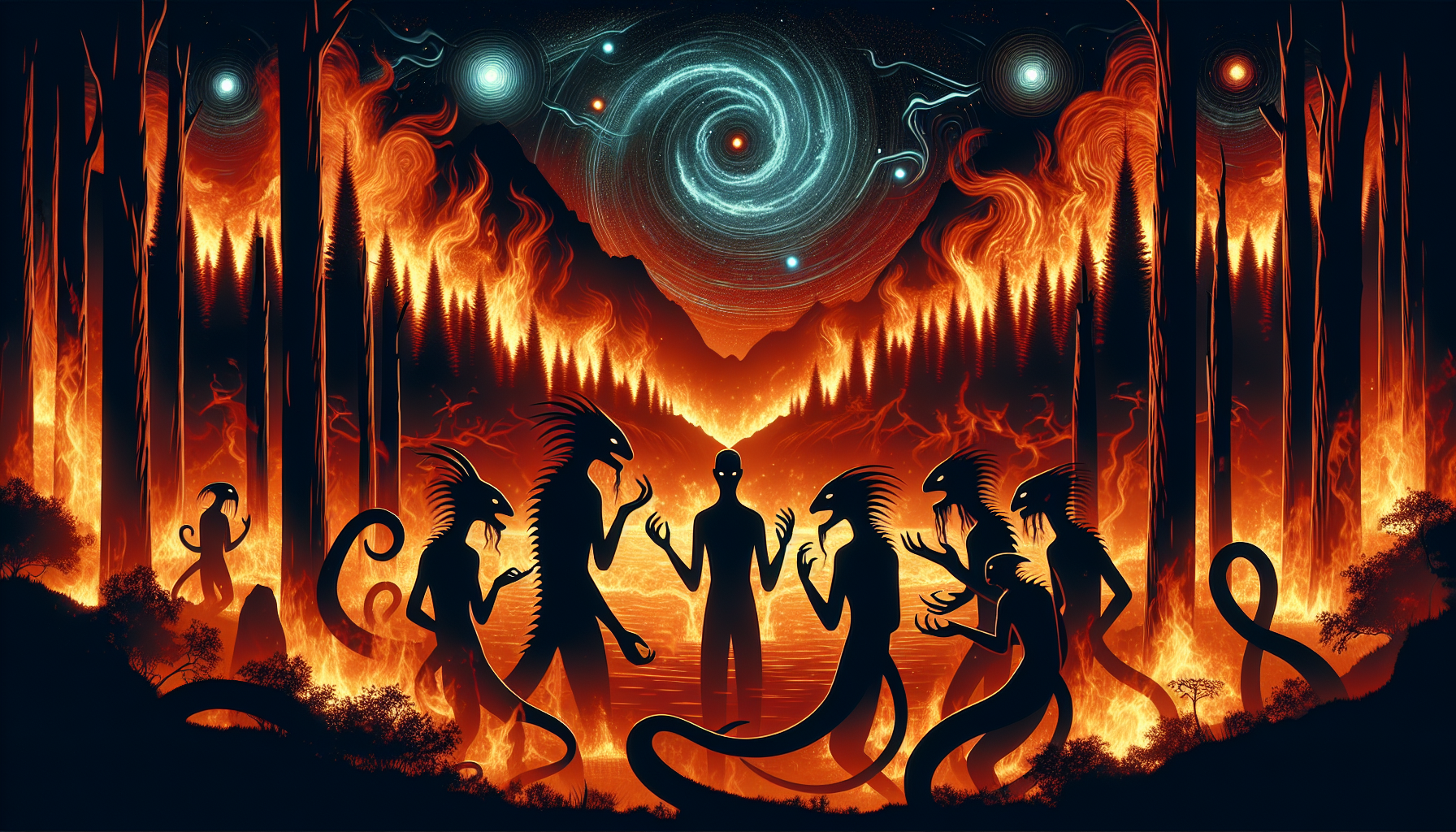The Enigma of Wildfires
Understanding Wildfires: A Natural Phenomenon
Wildfires are often seen as devastating events, consuming vast stretches of land, destroying homes, and contributing to air pollution. Yet, they are a natural aspect of many ecosystems. Certain plants and trees rely on wildfires for regeneration, suggesting that these flames can play a vital role in maintaining ecological balance. Wildfires can clear away dead vegetation, allowing new growth to thrive. This natural process, however, has become increasingly complicated due to climate change and human intervention.
Climate Change and its Role in Wildfire Frequency
In recent years, the frequency and intensity of wildfires have surged, largely attributed to climate change. Rising temperatures, prolonged droughts, and shifting weather patterns have created conditions ripe for wildfires. As landscapes dry out and vegetation becomes more flammable, the risks associated with wildfires increase. The interconnectedness of climate factors suggests that understanding the nuances of this relationship is crucial for future fire management and prevention.
Human Influence on Wildfires
Human activities contribute significantly to the increase in wildfires. Poor land management practices, urban sprawl into wild areas, and accidental ignitions from campfires or discarded cigarettes can easily spark flames that spiral out of control. The increasing phenomenon of wildfires shows how intertwined human actions are with environmental impacts.
The Cost of Wildfires
The economic and emotional costs of wildfires are staggering. Not only do they lead to immediate property damage, but they also affect long-term ecological health and community livelihood. The smoke from wildfires has broader effects, impacting air quality in areas far from the flames. The psychological toll on victims can last for years, leading to an emotional recovery process that is often overlooked.
Uncovering the Lizard People Mythos
The Origin of the Lizard People Conspiracy
The legend of Lizard People—sometimes known as reptilians—originates from conspiracy theories that suggest these anthropomorphic reptiles inhabit the Earth and are involved in governing humanity secretly. According to theorists, these creatures can shape-shift and are born from otherworldly dimensions. The roots of these beliefs can be traced back to various mythologies, where serpent-like beings represented power and chaos.
Why the Connection to Wildfires?
You might wonder how wildfires connect to the Lizard People. The association appears rooted in the idea that both serve as metaphors for deeper societal issues. Wildfires are often viewed as agents of destruction, while the Lizard People represent clandestine forces manipulating the elements of human society. When discussing environmental disasters, some people speculate about the Lizard People as a metaphorical scapegoat for the chaos that wildfires bring into our lives.
Feelings of Powerlessness
The lore surrounding Lizard People often stems from feelings of powerlessness among people facing environmental crises. Some might feel that their governments or the systems in place are failing them. The belief in conspiracies, such as the existence of mysterious reptilian overlords, often springs from a deep-seated distrust in authority. After a devastating wildfire season, it is not uncommon for people to seek explanations that are outside of conventional understanding.
Ecological Disasters as a Catalyst for Conspiracy Theories
Ecological disasters serve as fertile ground for conspiracy theories to sprout. The urgency and fear instigated by wildfires can create a vacuum that people fill with sensational narratives. Pointing fingers at Lizard People allows individuals to grapple with the abstract complexities of climate change and environmental degradation. It simplifies the chaos of wildfires into a narrative that feels both captivating and manageable.
Bridging the Gap: The Psychological Aspect
The Human Need for Explanations
After suffering from natural disasters like wildfires, it’s a natural human instinct to look for reasons and explanations—sometimes even fantastical ones. In the absence of clear, scientific narratives, the story of the Lizard People can feel like a simpler answer to the deeper questions that arise. How do we explain the havoc wreaked by wildfires? Is there a force pulling the strings behind these natural phenomena? These queries feed a need for narratives that are easy to understand yet complex enough to satisfy human curiosity.
Communication and Misinformation
The digital age has revolutionized how misinformation spreads. Social media platforms, forums, and websites dedicated to conspiracy theories have made it easier than ever for ideas—like the Lizard People— to gain traction. Sometimes, these narratives arise during crisis periods, where misinformation can tip into the realm of accepted knowledge for some. This becomes particularly dangerous during wildfires, as accurate information about safety and recovery may become muddled with sensationalist claims.
Empathy Versus Escapism
Interestingly, the fascination with Lizard People can also act as a system of escapism. Instead of confronting the tormenting reality of wildfire destruction or the looming threat of climate change, some individuals may find it easier to engage in stories that make them feel less vulnerable. While empathy for those affected is vital, this coping mechanism can often detract from finding genuine solutions to pressing issues.
The Importance of Critical Thinking
As wildfires and the Lizard People myth offer a unique perspective on the interplay between reality and fantasy, it emphasizes the need for critical thinking. Engaging with both scientific data about wildfires and the creative narratives surrounding them allows for a more profound understanding of the ecological and psychological landscapes. Building awareness about the actual causes and consequences of wildfires can encourage responsible actions and foster community resilience.
Actions and Solutions
Addressing the Root Causes of Wildfires
To combat the wildfires that have plagued numerous regions, a clear strategy is essential. This includes sustainable forest management, controlled burns, and community engagement in prevention efforts. Communities must come together to share responsibilities in mitigating risks and promoting ecological health.
Cultivating Resilience Against Misinformation
Ultimately, promoting education around natural disasters, critical thinking, and awareness can empower communities. By addressing fear and misinformation with knowledge and transparent communication, we enhance collective resilience. Engaging with both the immediate effects of wildfires and the metaphorical narratives they inspire helps ground our understanding in reality while allowing space for exploring the complex human psyche.
